Every day in Florence was a joy! We awoke refreshed and energized. Enjoy my short (musical) video of the view from our window...
After showering, we went down one level of the pretty stairs...
...and joined other hotel guests for breakfast in the sun-splashed dining room. Once again, the beverage server greeted us with a mellifluous "Buongiorno!" that was authentic and happy. We sat beside a Chinese couple and a pair of Germans, and we overheard four young people from England. We recognized the accents of two Americans who sat in the corner. Everyone else was Italian. The smiley server fetched our espressos, while her coworker cleared dishes from satisfied guests.
Lewis noticed a Facebook post from our friend in New York who complained about another snowfall.
We looked out at the warm sunshine and grinned.
Best of all was the bowl of small oranges—so freshly-picked that their stems still had leaves that hadn't wilted yet! Amazing!
Despite it being "winter", our hotel had its own orange trees on the patio.
We were familiar with the main streets, so we quickly navigated to the Palazzo Vecchio. We hoped to get inside before a line formed. On the way, we paused at the Piazza della Repubblica to listen to a swingy jazz trio, and their toe-tapping music echoed along the stone buildings. Enjoy my video!
Seen above, the Mercato del Porcellino (Market of Little Pig) is a 16th-century marketplace that is now full of leather goods and silk garments for sale. The sellers seemed legitimate—not peddlers. In 1547, Cosimo I had the loggia constructed to protect the precious fabrics and jewelry that were sold there. One section was used to for the public to watch bare-butt floggings of debtors.
Turning a corner, we admired the palazzo's clocktower over the rooftops. Such a scene is an advantage of a low-level skyline, and it helps you navigate through the urban landscape.
It was our third time examining the palazzo to see if the entry line was short enough. However, there was already a very long line of people waiting to enter. If you look at the bottom of that picture (above) you'll see them.
We didn't want to waste our vacation time waiting on lines. Whenever a site-seeing attraction had a long line, we bypassed it and returned later. Seamlessly, we were able to do something else with our time and enter the attractions when lines were gone. (As such, we never entered the Duomo because its slow-moving line was always too long. But since we explored the Milan Duomo from top to bottom, we were content with that cathedral experience).
At Lewis' insistence, we tried waiting on the line for the palazzo, but we were frustrated to see that people with pre-purchased tickets were allowed to continually enter... which stalled the line of people waiting to buy tickets. That was stupid. You should never neglect people who want to give you money. They should've had two admissions windows: one (moving quicker) for ticket-holders, and one (slower) for people buying tickets. Instead, they absurdly let ticket-holders use all the windows... and when tour groups arrived, that further stalled the line of people waiting to buy tickets. After 22 minutes of standing in a line that hardly moved, we exited the line and did something else.
We went shopping in a department store named Rinascente. It is a handsome retail space.
The rooftop was crowded with people eating brunch, and a line of people formed to gain access.
However, the upper level also featured a food market, which interested us.
Luckily, it was the last day of their 20% Discount Sale, so Lewis bought tins of Italian cookies and cartons of gummies. They were gifts to his coworkers.
Further north, we entered a family-owned Italian chocolatier named Nino And Friends. Its friendly employees offered a plethora of free samples to everybody. Specialties include candies filled with Limoncello, organic chocolate bars, and bonbons filled with pistachio cream and hazelnut cream. Every morsel was delish! Mi piece il cioccolato.
Seen below, each package was €6.36.
We toted them back to our hotel and went out to discover more things.
You might think it's silly for us to buy Italian goodies when we we come from NYC, which has a neighborhood named Little Italy. In truth, that area fails to offer authentic Italian fare. Most places are now owned by Arabs, and the remaining businesses are so commercialized and Americanized that you won't see any true Italian recipes. Since 1870, America was discriminatory and cruel against Italian immigrants, and they suffered mass-murders, lynching, hostility in underpaid jobs, and religious intolerance. America's prejudice didn't lessen until the 1970s. To see what immigrants overcame, please use this link:
https://halfwindsorfullthrottle.blogspot.com/2015/09/america-land-of-free.html
As we sauntered along the street, we suddenly noticed another architectural element on historic buildings: gable-plaques. Installed by the original residents, they represented who used to live there. Symbolism and coats of arms indicated wealthy families, papal families, professionals, and nobility.
The Medici were all of those things... and they owned many properties in the vicinity. Collectively, the 12 Medici palaces and villas, and two "pleasure gardens" are a UNESCO World Heritage Site. Lewis wanted to visit their original dwelling: the Medici Riccardi Palazzo. It fills an entire block!
When conceived, the Renaissance structure was literally "groundbreaking" in its architecture. Whereas most people built upon pre-existing structures, the Medici bought several plots of land and razed everything! Then, they built a new massive palazzo. It was stately yet foreboding. Its masculine facade was intended to be imposing and also conceal the sumptuous interiors. (It was considered gauche to have "conspicuous consumption" of wealth).
New generations of the Medici family eradicated that modesty/restraint—just as the Vanderbilt family did in Manhattan. (Ironically, both clans were a "flash in the pan", and their affluence was short-lived).
*Incidentally, the iron bars over the windows are a relic of Italy's medieval vices and menacing lawbreakers.
Modern homes do not have them because the nation matured into a stable society. In contrast, homes in New York City's upscale neighborhoods are still compelled to put bars over their doors and windows. Living like prisoners in self-made cages, overtaxed residents cannot rely on their overpaid authorities to maintain law & order, so all types of homes are barred... and look ugly.
That is indicative of social decay in an uncaring city. It looks like a third-world country.
We were delighted that there was no line to enter the palazzo.
Alas, the receptionist requested us to choose a time-slot for entry. The soonest availability was at 1pm, and it was currently 12pm. There was nobody ahead of us, and we didn't understand the need to wait, but we obliged her. Regulations in Italy might not make sense, but it's best to abide by them. (We experienced the same thing when airport authorities requested each of us to complete a Passenger Locator Form, yet nobody collected it from us or wanted to see it. We were also compelled to complete an online Travel Attestation... that nobody checked or wanted to see).
We used that time to have lunch at a Chinese restaurant around the corner named China Tang.
The young waitress was born in China and lived in Italy for 5 years. She was so immersed in Italian culture, that when Lewis spoke to her in Mandarin, she habitually responded in Italian. That type of assimilation is impressive! Customers were given utensils and chopsticks, and I might've surprised her with my dexterity in using chopsticks. :-)
Lewis ordered braised beef tendon—which was perfectly chewy and piquant—and a bowl of greens. It our first time eating a type of Chinese string bean. We presumed that it was an Italian bean cooked with Chinese flavors. The Chinese cook explained that it was a Chinese bean brought to Italy, so that Chinese restaurants can use authentic flavors when they want to. He was surprised that New York City's Chinatown didn't have it.
We also slurped a bowl of noodles in spicy broth, topped with scallions, chives, lotus root, and minced pork. Last, we savored perfectly-crimped pork dumplings. Everything was great.
Obviously, there were no fortune cookies because Italians know that they are not part of Chinese gastronomy. Japanese immigrants brought them to California at the turn-of-the-century. After America racistly and illegally imprisoned Japanese immigrants and citizens during WWII, Americans still wanted fortune cookies. They urged Chinese restaurants to make them, and the Japanese cookie industry was assumed by Chinese immigrants in California. In typical American style, the treats were perverted into nothingness and are still ignorantly applied to China. Americans are the only ones who still expect fortune cookies from basic Chinese restaurants, uncaring that it's the wrong culture.
*To see when we learned about them in Japan, use this link:
https://halfwindsorfullthrottle.blogspot.com/2016/11/our-trip-to-japan-5-of-7-kyoto-gardens.html
During our lunch, I used the WiFi and researched online to learn about the Medici family; their tale is an unbelievable mix of adventure and saga! I will relay a condensed version to you.
At the designated time, we returned and the woman at the entrance was smiley to see us. The Italiana stopped talking with a pair of Asian tourists and let us through the gate. The first thing that we noticed was another shapely male buttocks, ahead of the Medici coat of arms.
This palace was created in 1444 for the patriarch of the family and the founder of the Medici Bank: Cosimo de' Medici (born in 1389). Like many bankers, he was criticized for building a lavish home "with money that was not his". In today's money, he spent $500 million as a benefactor of art and culture. As a moneylender, he gave ambitious men the funds to buy themselves jobs as magistrates, councilmen, Catholic cardinals, and the Pontiff (Pope). The Medici almost had a monopoly on managing the wealth of the Roman Curia and the Papal States (mostly accrued as donations from Catholic believers). Cosimo paid the ransoms of corrupt rulers, and they owed him favors thereafter. He married a countess, yet he had an illegitimate son with a slave. But that son used the Medici power to become a high-ranking abbot, Papal Tax Collector, and a Catholic prelate. Henceforth, Cosimo was a powerhouse.
After Cosimo's death in 1464, his sickly son, "Piero the Gouty" made decisions that upset merchants, nobles, and politicians who feared that Medici power overshadowed Florence's ideals as a republic. He died five years after his father. His 20-year-old son, "Lorenzo the Magnificent" took control of the family's bank... and indirect control of Florence via payoffs, bribes, and deals. He co-ruled with his 16-year-old brother, Giuliano—whose handsomeness earned the nickname "Golden Boy". While Lorenzo lavished resources on the arts, Giuliano fathered an illegitimate son with his mistress; the boy eventually became Pope Clement VII.
Lorenzo famously survived an assassination attempt by the Pazzi family inside the Duomo, but his brother was fatally stabbed 19 times. As punishment, the Pazzi were bankrupted, banished, and anyone married to them was barred from public office. Any building or street with their name was renamed.
More famously, Lorenzo was the patron of both Michelangelo Buonarroti and Leonardo da Vinci! (Both artists were gay). He was simultaneously the patron of Sandro Botticelli and several other masterminds who collectively birthed the Renaissance that impacted the world. As I already mentioned, Michelangelo won the Medici's affection and was honored to live and dine with them for three years.
Meanwhile, Lorenzo appointed Leonardo as his ambassador to the Duchy of Milan, where his artistry blossomed further, from 1482 to 1499 (including The Last Supper). (When the tyrannical Duke of Milan failed in his many wars, Leonardo fled to Venice and focused on architecture, map-making, and engineering. Hired by Cesare Borgia—the debauched son of the corrupt Pope Alexander VI—Leonardo designed military weapons and defenses. In 1503, he returned to Florence for three years and then relocated to Milan. He tutored a handsome adolescent, Francesco Melzi, who remained devoted through Leonardo's life. In 1513, Da Vinci joined Michelangelo in Rome, working for Pope Leo X in the Apostolic Palace and studying botany and anatomy. Two years later, he was hired by 20-year-old King Francis I of France to build a mechanical walking lion. He also accepted the king's offer to live in the Loire Valley as his neighbor. The two men shared ideas vibrantly, and Da Vinci's artistic genius and engineering skills contributed to the building of Chambord Castle and its famous Double Helix Staircase, where two people can use it without meeting. (We were there, and it epitomizes French Renaissance architecture, as seen here)...
In 1519, Leonardo died in France. *That is why the Mona Lisa belongs to France).
Alas, the other half of Lorenzo's decisions were harmful to the bank, causing several branches to collapse. Perhaps that is why his successor/son was named "Piero the Unfortunate". During that time, a Catholic Dominican friar named Girolamo Savonarola preached in the city about churchly corruption and the despotic power of the Medici. While watching the series, The Borgias, we saw scenes of the manic friar getting the crowds frenzied so that they burned their possessions (the Bonfire of the Vanities), whipped themselves for penance, attacked neighbors with more wealth than them, and looted rich properties. It resembled the 1930s upstart of the Nazi Brown-Shirts in Germany.
*To see our adventure in Germany when we saw its memorial to the book burnings in Berlin, please use this link:
https://halfwindsorfullthrottle.blogspot.com/2022/11/our-trip-to-berlin-germany-part-1-of-6.html
Obviously, he focused his anger at the degenerated Borgia pope and his wicked cardinals. (Borgia was elected as pope in August 1492—the same month that Christopher Columbus sailed to the "New World" of the Americas).
In 1494, the Medici were exiled due to their power-hungry behavior and excesses. (That's when Michelangelo fled to Bologna and was brought to Rome by the Catholic Church in 1496 at the age of 21). Their banishment coincided with King Charles VIII of France invading Italy (marching easily through the Duchy of Milan) to attack the pope. Being a sly double-crosser, the pope duped him. Then, the pope duped the friar into exposing his mortal weaknesses, and a papal decree sentenced the friar to death. He was burned at the stake in the piazza outside the Palazzo Vecchio.
Behind-the-scenes, the Medici family toiled to have their conviction overruled. Lorenzo's second son, Giovanni, was already a cardinal in Rome—at only 17-years-old! But since he did not vote for the Borgia pope, he had to wait until that man's death in 1503, so he could entreat the next pope to help his family. That pope was short-lived and died 10 years later. By then, Giovanni "won enough support" amongst the Church leaders to get himself voted as the next pope, Leo X, in 1513.
*Pope Leo X was also famous because his outlandish exploits and homosexuality with handsome young noblemen whom he appointed as his chamberlains (while his cardinals shamelessly kept numerous boys "for their pleasure") prompted Martin Luther to initiate the Protestant Reformation that splintered Christianity. When Leo died, the Church was hugely in debt.
As head of the Medici family, Leo immediately guaranteed its status by supporting his younger brother, Giuliano, as ruler of Florence and vowed to punish anyone who defied them. Yet, Giuliano died in 1516 at age 37. (His illegitimate son became a cardinal).
His nephew, Lorenzo II, became the de-facto ruler of the city. As the son of Piero the Unfortunate, Lorenzo II was a direct descendant of Cosimo. Lorenzo II's daughter, Catherine de' Medici, became the notorious Queen of France! However, he died within three years. The next ruler died after four years, and the ensuing rulers both died after three years. That year, 1527, the frustrated and overtaxed citizens ousted the Medici family again. Florence became a republic again. By then, the Sacking of Rome ended, and the Medici-born Pope Clement VII survived and told the Holy Roman Emperor (whom he appointed and crowned)...
In 1532, the Medici bought the privilege of being made "Dukes of Florence", which was backed by the Holy Roman Emperor and their relative, the pope. The first duke was assassinated by his cousin via sexual entrapment. (The emperor ordered that man's execution).
The duke's infant son was bypassed, and another branch of the family rose to power. Now an aristocrat, Cosimo (born in 1519) changed his name to Cosimo I, in preparation for a ducal lineage. In 1540, he moved into the Palazzo Vecchio.
In 1659, their waning wealth compelled them to sell their ancestral home to the Riccardi family, and that is why it is now called the Medici Riccardi Palazzo. In 1814, the Riccardi sold it to the government. In 1938, the Nazi dictator, Adolf Hitler, dined there with Italy's dictator, Benito Mussolini. (Seven years later, they both died, two days apart. Mussolini was shot and dumped in Milan, where angry citizens mutilated his corpse and hung it upside down—as he did to many citizens whom he feared). The building is still occupied by government agencies.
We arrived in the courtyard—a dimension of Italian architecture since ancient Roman times. Urban palaces of the 1400s enclosed garden courtyards and lavish interiors.
When the Medici family wanted a grander home and commandeered the City Hall, they left this palace to be used by lesser relatives. Nonetheless, as a crowning glory, the street lamps on the building have the ducal crown.
Since the Medici were the city's rulers, both palazzos were used by city departments as administrative offices. (That made things easier for the Medici). Continued today, the palazzo is utilized by the civic government of the Metropolitan City of Florence. A police station is there, too.
Our self-guided tour started in a ground-floor chapel that featured paintings by Benozzo Gozzoli, who was born 600 years ago. He was a great Florentine painter, and he won the patronage of the Medici family, which was as good as earning a Royal Warrant from a monarch. His beautiful paintings cover the walls of the "Chapel of the Magi". (Magi is the plural form of Mage: a practitioner of magic). In addition to the Three Magi (a.k.a. Three Wise Men), he depicted members of the Medici family, to illustrate their dynasty. It's marvelous.
Looking at the seats, the intricacy of the woodcarving was magnificent. Inlaid wood was positioned with mastery in an era when workmen only relied on hand-tools and candlelight.
The ceiling is an effusive display of geometrics, color, and gilding.
Turn the sound on for this enchanting video of a chamber that was entirely lit with film projectors to demonstrate the development of the palace's art.
Moving onward, the style of each room progressed from the Dark Ages to a 1680s appearance inspired from Versailles. Clearly, the palazzo is impressive, yet we understood why the family wanted to relocate into a more modern/stately residence. A progression through adjoining chambers ("railroad" style) was intended to categorize lesser nobles from VIPs.
The magnificent mirrored ballroom had frescoes by the famous Neapolitan painter, Luca Giordano. His creations were fresh and dynamic for their era. Here is my video of it...
Once again, a muscled hunk spouts water from the area near his groin... inferring another erotic image.
In today's era, if your neighbors painted that on their wall, they might be criticized and scandalized.
More implied homo-erotica appeared in a clenched buttocks, as well as friezes depicting wrestlers. The next frieze focuses on a sculpted buttocks protruding from the artwork (perhaps for a caress from the viewer), while the angle of his leg guides your eyes to the chiseled torso of the other male.
*A similar thing occurred in the 1950s, when nations like the USA considered homosexuality to be illegal. Male fitness and wrestling magazines covertly provide erotic images to gay men.
Concluding our visit, we browsed for souvenirs in the gift shop. We selected a Christmas ornament that had a metallic ball inside, which made it ring will bell-like sounds. Lewis wanted the blue one, and it has the city's emblem. Later, we discovered that the blue version of the emblem is historically significant from when the Duke of Florence colored it blue to honor his closeness with the French monarchy.
The last time that I was in Florence, I bought a watercolor painting, and the artist signed it with his sketching pencil (and misspelled my named, LOL). Both of those Florentine souvenirs enhance our home!
We returned to the Palazzo Vecchio via several cozy streets...
...but its admission line was still too long.
However, the queue to enter the Chanel boutique was miraculously non-existent, so we went there. It is grandly situated in proximity to the governmental palace, but that facility was undergoing renovation, so it occupied a temporary location in another storefront of the same plaza.
Lewis was eager to meet Italian colleagues, and they were happy to meet someone from a NYC boutique! The floor manager graciously dedicated her time to chat with us during our entire visit. Momentarily, she answered questions from her subordinates and clients, but she always resumed our conversation with typical Italian elan. As a veteran of 15 years, she discussed the company and city. She described the compensation and Life/Work balance in Italy (European Union), as compared to the overworked USA. It reinforced our mindset of relocation, and she thought that our UK desires were smart. As a tip for visitors, she advised us about the "daily rhythm of Italian life": residents begin their mornings by going to the food markets; after lunch, they rest; they do their retail shopping in the afternoon. Therefore, it was best to visit the food markets/stalls in the morning (for best selection). That also explained why stores were usually open in the afternoons, but not before lunchtime. We thanked her.
By then, it was sensible to enter the palazzo because the queue was shorter. We got in to buy admission after only several minutes... instead of needing 30-45 minutes. A pair of police officers patrolled the area. We admired their uniforms and helmets...
The fortress-like building has a lot of history. Back when Florence was a republic, the building was intended as the City Hall. In 1299, it was built upon the ruins of the disgraced Uberti family's palace so they could never rebuild their homes there. Arnolfo di Cambio was its architect, and he also created the Duomo. He also incorporated the pre-existing tower from the Foraboschi family, which is why it is not centered.
The building was part of the earliest city walls, which were gradually expanded as the population grew.
Just as Amsterdam's City Hall was converted into a palace for its conquerer, Florence's City Hall became a palace for the Medici clan that seized control. In 1539, Cosimo I moved in and redecorated it to signify the wealth and power that he brought. The most astonishing aspect is the expansive Meeting Hall, known as the Hall of Five Hundred. When it was built in 1494, it was the largest room in Europe. Duke Cosimo I became Florence's ruler, so he replaced the Grand Council and refurbished their hall as his ducal Throne Room and Audience Chamber. He hired Giorgio Vasari to remove the roof, raise the walls, rebuild a roof, and add paintings to its humungous ceiling. As a testament to Vasari's genius, he completed the stunning works in only two years! Instead of painting the ceiling as Michelangelo painstakingly did for the Sistine Chapel, he painted 39 panels that were attached to the ceiling. Here is Lewis' short video of it...
Those creations were envied—and copied—across the continent. In the Republic of Venice, the Doge (elected king) added a similar motif to the Grand Council Chamber in his waterside palace. Years ago, I saw it, and it looks like this...
Of course, Vasari spared the creations from two Golden Age painters that already existed:
Michelangelo drew a sketch of the Battle of Cascina, but he was summoned to Rome by the pope to design a tomb in 1505, so the sketch was never painted. His creation in the Palazzo Vecchio features his favorite topic: nude male figures.
In 1503, Leonardo da Vinci painted another battle scene, but the pigment melted and was not replaced.
When we ascended to the mezzanine, we truly appreciated the craftsmanship and carpentry that contributed to making the gigantic ceiling so special.
Tapestries are draped over the walls. As a military ruler, the duke wanted each to be a showpiece of a Florentine victory against its longtime rivals: Sienna and Pisa. Lewis and I spotted many taught butts interwoven in the battle scenes.
Masculine statues punctuate the perimeter. Most of them depict the muscular Greek deity named Heracles. (In ancient Greek mythology, he was the son of Zeus—who was king of the gods. When Rome conquered Greece and renamed the polytheistic gods and goddesses, Heracles was renamed as Hercules—son of Jupiter). They certainly provide thought-provoking distractions during governmental meetings!
Naturally, the craftsmen hired by the Medici affixed the family's coat of arms to their creations throughout the palace. As the family altered, so did its coat of arms...
After the family was ennobled higher to Grand Dukes and Duchesses, bigger crowns were added above their coat of arms—to symbolize the larger dukedom that they ruled with absolute sovereignty. Imagine a banker ruling a city or state nowadays (Not indirectly, but outright)!
When a Medici became Pope, the coat of arms received the three-tiered papal crown and "keys to heaven".
Once again, we eyed shapely male muscles. A framed painting featured shirtless laborers.
In the next chamber, a painting shows a well-toned man sitting naked amongst armored courtiers; he seems blithely unconcerned about his nakedness.
More unclothed men reclined nonchalantly while uniformed men formed a regal procession around them.
Despite the nudity, the painting featured altar boys, clergy, and bishops. I suppose such a juxtaposition is not new. The Catholic Church maintained centuries of "Don't ask, don't tell" regarding its own homosexual exploits.
Yet another painting depicts an undressed man—whose tush is hidden by a naked boy—turned away from the viewer (to show his rippled back muscles). The way his head is turned could be interpreted as "kissing" the male figure beside him.
A painting of a Medici cardinal gives prominence to a shapely-legged lad who flexes everything below his waist perfectly.
A painting of a siege has plenty of focus on the curvy backsides of men who wore shorts (yes, shorts) during the battle.
Considering the quantity of stairs in the palace, inhabitants will surely develop nice-looking legs. The staircases also provided Lewis with photo-opportunities to show-off his new sneakers.
As we moved through the building, we realized that its dimensions were incongruent. Resulting from medieval development along ancient roads and long-gone city walls, the structure has an irregular shape.
That's because people usually built upon existing structures, rather than demolishing them and starting again. Whereas the Medici family dismantled and rebuilt the structure for their original palazzo, they kept the beloved City Hall and merely enlarged it as their secondi palazzo.
Unlike the Pitti Palace, this one contained furniture, which gave a sense of lifestyle to the rooms.
In the Middle Ages, chairs were only given to important people; lesser people were lucky if they could sit on a stool. However, the chairs were small. At least, humans were smaller in that era, too.
We keenly appreciated the ancient artistry in things like door hinges and window latches. Remember, such things were handmade by blacksmiths who forged them in scalding fires. It required skills to shape a cylinder of metal into a rectangle, and then precisely twist it into a spiral, and curve it upward!
Relatedly, woodcutters and carpenters embellished furnishings. In that era, it was fashionable to add human heads to furniture, home moldings, and inscribed books.
Like architectural eavesdroppers in England, heads appear on the palace's parapets... watching citizens below.
Relatedly, there are several secret "listening windows" to overhear conversations in the palace. Here is our video of one above a staircase...
Cosimo I's lavatories also have tiny windows that overlook the plaza! Like the Tower of London, the lavatories were positioned to let feces and urine drop down the side of the exterior walls... onto the ground below. (Plumbing wasn't invented yet).
A century before France's usage, Florence used the fleur-dis-lis (lily flower) as its symbol. Florence's version is red and features floral stems jutting out from the sides.
*It is seen throughout the cityscape on municipal fixtures, storefronts, and historic structures.
A century after the Florentines, the French monarchy used a fleur-dis-lis with a color scheme of gold on blue. The Medici were the moneylenders who absolved France's King Louis XI of a debt. In thanks, he allowed them to add his royal colors to their coat of arms. In celebration, they covered an entire room of the palazzo with the king's fleur-dis-lis. (Later in the French monarchy, when kings were named Louis, their symbol was nicknamed "Flower of Louis". Therefore, Lewis thought it was funny to pose against a wall of "Flowers of Louis"!)
On the ceiling of the next room, Duke Cosimo colored Florence's fleur-dis-lis like France's. I hope you enjoy my video of it...
The Medici were further intertwined with France when two of its women became Queens of France... and both birthed French kings. Others became Duke of Orleans and Duke of Anjou. The most famous was Catherine de' Medici, who married France's crown-prince in 1533. (The same year that England's King Henry VIII unlawfully married Anne Boleyn... months before his first marriage was annulled). Only ten years before that, her father-in-law sent an Italian explorer, Giovanni da Verrazzano, to be the first European to see New York. (A bridge is named for him. But, typical of greedy NYC, it is the most expensive toll bridge in the USA: $19 for one-way). In 1547, Catherine was crowned as Queen of France.
The palace is certainly full of vibrant colors. I admired the coffered ceilings and diagonal patterns that were painted on the rafters of the older part.
Completing our self-guided tour, we exited through the mammoth doors... and faced the perfect backsides of several handsome male statues.
Yes, the Medici dukes installed oversized statues of nude men in front of their home. Sexy naked men are all around. Ammazza!
One of the statues is a replica of the David statue that was originally positioned there.
In 1499, Michelangelo was lured back to Florence to sculpt it. He finished in 1504. (Leonardo da Vinci voted for its placement to be outside the Palazzo Vecchio). In 1505, he was hired by Pope Julius II to paint the Sistine Chapel, which he completed in 1512. By then, a Medici was the pope, and the next one was a Medici, so the artist's next works stayed in the Vatican.
There is another famous 1476 statue of David that was at the Palazzo Vecchio but is now at the city's National Museum. Like the one initiated by Cosimo (the banker), it features a lithe boy in an effeminate posture. Resounding speculation and accounts by the sculptor, Andrea del Verrocchio, state that the model for the statue was his pupil: a young Leonardo da Vinci. The boy's father was friends with the artist, and Leonardo's talent earned him access to the artist's studio. As an uninhibited gay man, Leonardo's self-assured robustness was perfect for "David".
On the Via di Colline, we spotted a wine bar named Bio & Brado (Bio & Wild). It looked inviting, so we decided to have two glasses of Tuscan Chianti: a wine famous from that region. If you're in Florence, you're surrounded by hills of Chianti vineyards and wineries.
It's always a lovely idea to sip wine in the afternoon. Italians love it, and we do, too. This short video clip personifies that!
The owner finished making rustic sandwiches for two Englishmen, and then he poured our wine from a classic wicker-wrapped bottle. His tiny shop was loaded with casks of wine, legs of ham, air-dried salami, jars of biscotti and cantucci (smaller biscotti), shelves of freshly-baked bread, and a showcase of cheese, pickled vegetables, and cured meats. His son owns the farm where the pigs are raised.
Alas, we had no way of knowing that the shop only accepted cash payments. (Once again, no signage in the window). Unworried about us leaving without paying, the man graciously said, "Do not worry. Sit and enjoy your wine. Pay me later!"
Personally, I couldn't do that until I paid, so I followed his directions to a Currency Exchange booth and got some Euros. Each glass of locally-made wine was €4.
Lewis and I toasted our glasses to the Italian lifestyle of sensible relaxation and congeniality.
Spontaneously, we decided to have another dinner at Fishing Lab, so we went there to make a reservation. The door was locked but we got the attention of two employees. The man gestured that they were closed, so I made a scribbling gesture to indicate that we wanted to make reservation. Uncertain, the man gestured for us to come to the side of the restaurant. There, he pushed a large window, which magically became a door—as it pivoted on a pole.
He was immensely flattered that we ate at the restaurant already and wanted to return. That earned us a prime table located on the mezzanine—closest to the ceiling frescoes. With a grin, he assured us that we would love our view.
At the grocery market near our hotel, we purchased packages of COVID masks (made in Italy)—10 masks for only €1.40! Such affordably is unseen in the USA, which handled the pandemic the worst than any country in the world, and therefore should have the most accessible masks (but its profit-driven greed prevents that). Thus, Lewis bought five packs to bring home. We also spent a mere €4 for a generous portion of Prosciutto de Toscano, made from the highest-quality pigs in Tuscany. It is seasoned and matured for a long time, so it gains a robust flavor, rich aroma, and optimum sapidity. We spent only €3 for a flavorful bottle of Orvieto wine from Bigi Vineyard. That is unbeatable value. We noshed in our hotel room, while watching an Italian channel's coverage of Queen Elizabeth's upcoming Jubilee Celebration.
*Related to the Queen and all the palaces that we saw on this day, please use this link to see when we visited inside Buckingham Palace:
https://halfwindsorfullthrottle.blogspot.com/2022/09/our-return-to-london-uk-part-4-of-6.html
After nightfall, we strolled gently back to Fishing Lab.
The hostess greeted us with a masked smile, checked our COVID vaccination cards, and escorted us upstairs to our table, which overlooked the dining room.
It also put us against the domed ceiling. Wow! The frescoed walls and ceiling were from 1360! They were some of the oldest in Florence. It was stunning to eat and admire them.
Apparently, the building was originally a Guild Hall (like the City of London has). The dome was decorated to depict the walled City-State of Florence as a new holy city—the heart of Western Civilization. Its 16 districts have their coats of arms on the walls.
Quickly, the restaurant filled up. (It was the customary dining hour). A soundtrack of American singers came from hidden speakers. In this video, you can sense the bustling vibe...
Once more, we ate the rice balls, fried seafood, and grilled jumbo prawns.
We tried the handmade pasta with Bolognese meat sauce, which originated in the nearby City of Bologna. It is pronounced "Bolo-nays-ah". Then, we shared a grilled fillet of fish over roasted potatoes and asparagus. That entree was topped with pesto sauce. The word "pesto" derives from the pestle that is used to mash its ingredients. The chef used coarse salt in the sauce's mixture, because its abrasiveness helped smush the basil and parsley leaves.
We washed it down with a German bottle of Riesling and an Italian bottle of mineral water from San Benedetto. I noticed that the utensils were made in Italy by a superior metalsmith named Salvinelli.
Passing the carousel again...
... we returned to our hotel, ate our chocolates for dessert, and popped a €3 bottle of sparkling Asti that we bought at the grocery store (made in the Piedmont Region's Town of Asti).
We watched music-videos on TV, and we were surprised.
Heroically, homosexuality is commonplace on Italian television! We saw three music-videos that featured gay men. Something like that is inexplicably absent and censured on American TV. The singers were not the types of gay men who decided that they must be limp-wristed and speak with a fake lisp—to identify as being homosexual. They are regular guys who are attracted to guys... without "false layers" or stereotypes. It was refreshing.
Same-sex love scenes, caresses, and embraces were seen with hip-hop and rock music:
On Hold by The XX (a rock band from London).
Take Me To Church by Hozier (from Ireland) focuses on unresolved Catholic discrimination against homosexuality.
Brividi by Mahmood & Blanco. (We liked their bike riding scene near some wind turbines... which are also absent in the USA).
Such things are banned in the USA—despite it proclaiming to be the "Land of the Free".
Such imagery reminded us of a gay-friendly TV commercial for Coca-Cola that we saw in the Dominican Republic; the ad was never aired in the USA, where Coke is headquartered. To see our trip to DR, please click this link...
https://halfwindsorfullthrottle.blogspot.com/2017/10/dominican-republic-vacation.html
Nonetheless, we felt inspired by seeing equal representation in Europe. It inspired our own après dinner entertainment! (The Italian way to say "Kiss me" is Baciami). Full of happy thoughts, we went to bed. It was sublime to sleep with the window open. The city was quiet and peaceful.
Join us in the following segment as we visit another country!

















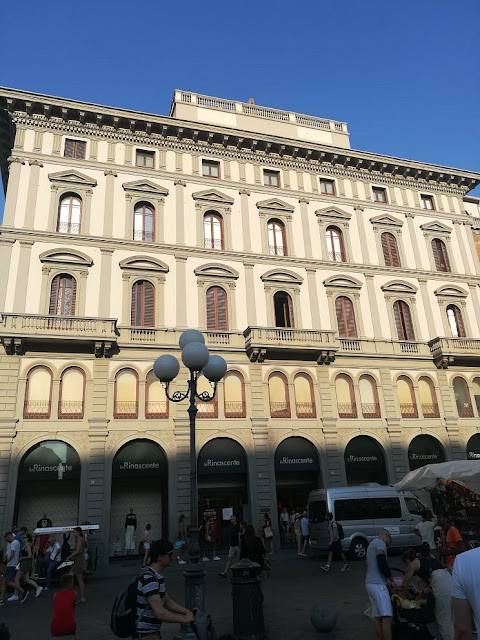











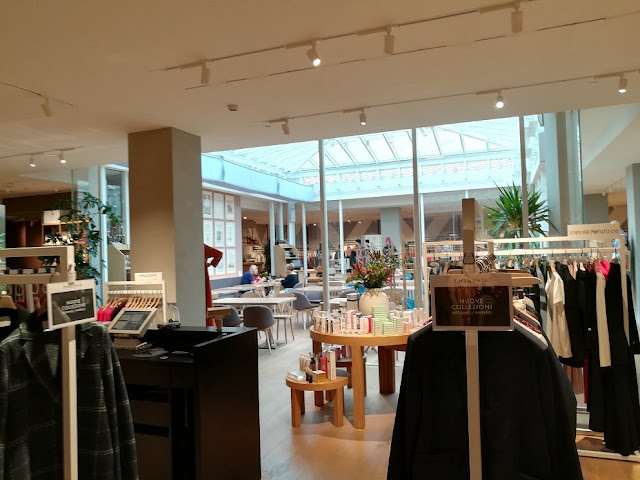













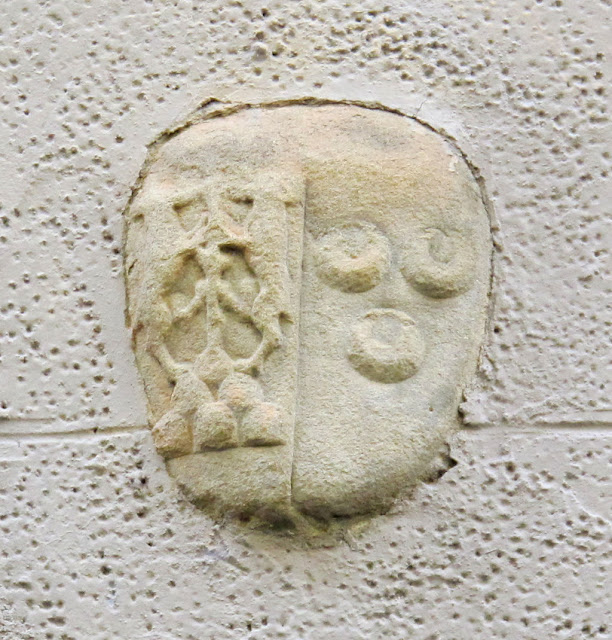


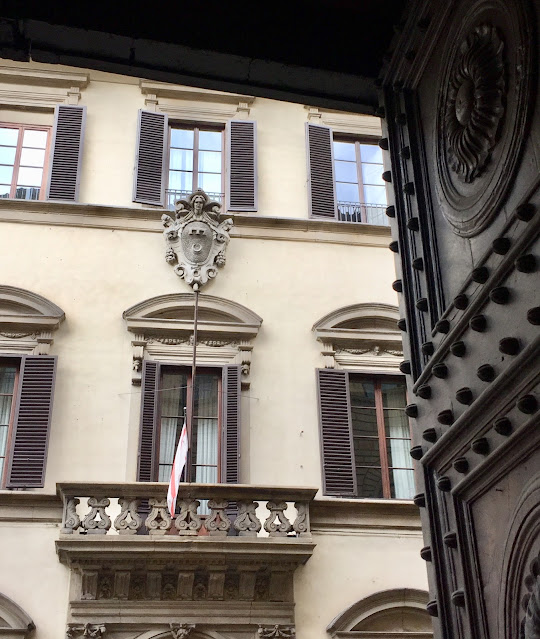













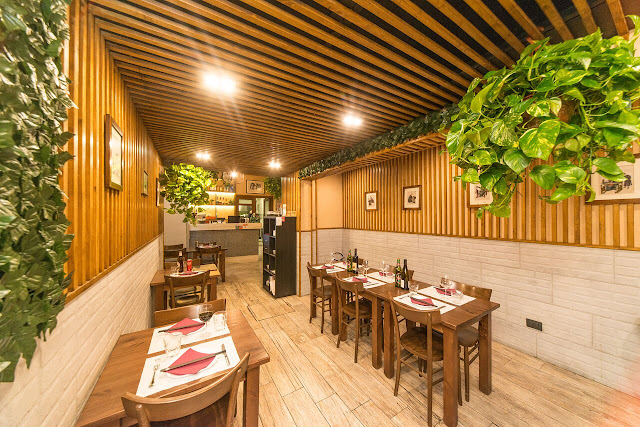







_detail_of_legs.JPG)











.jpg)




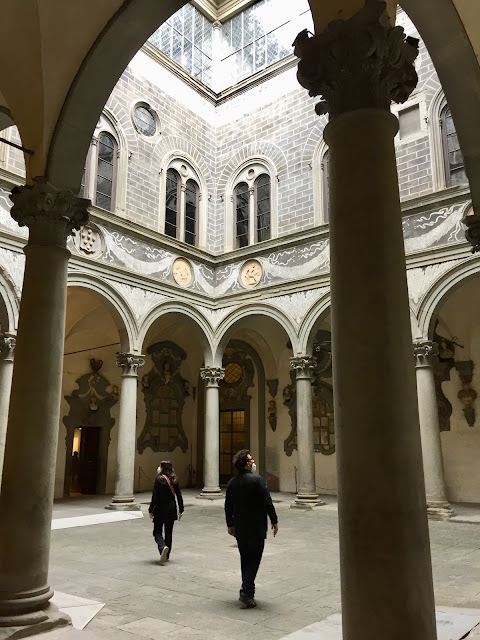




















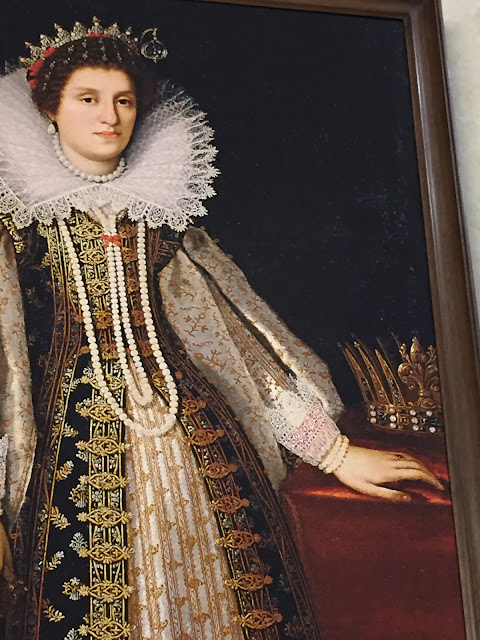





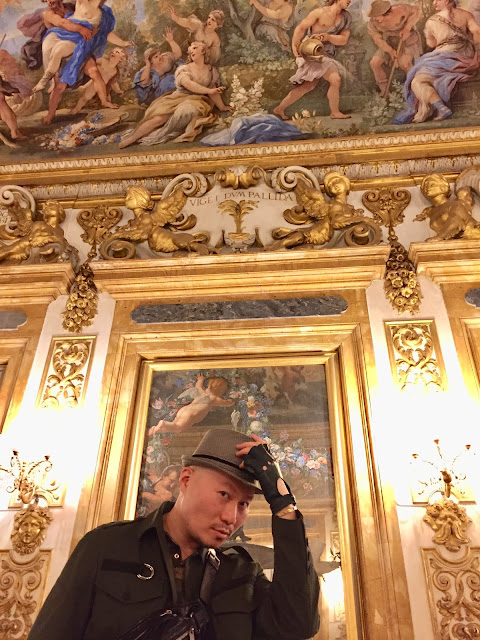





















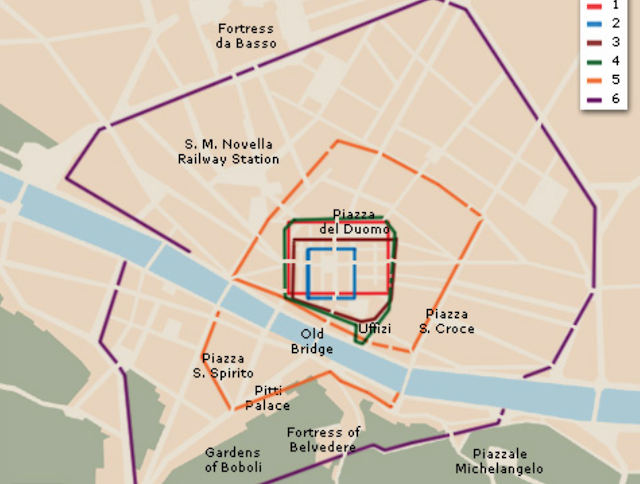



















































































































No comments:
Post a Comment
Don't be shy: leave your comments :)